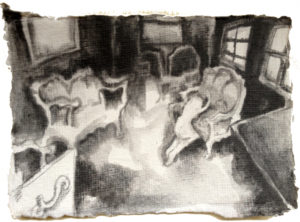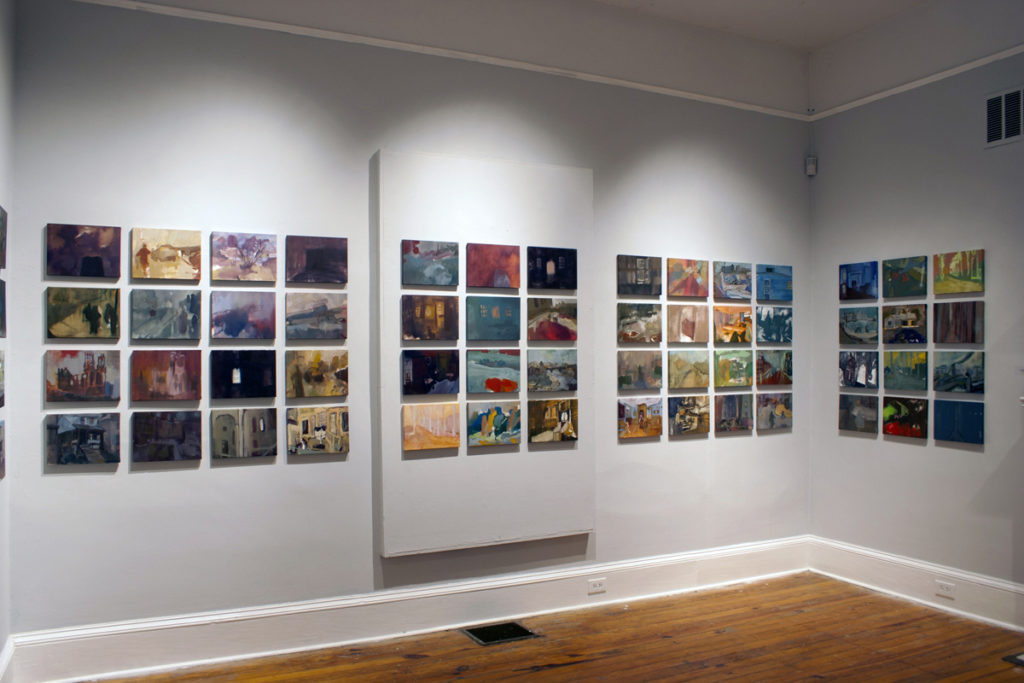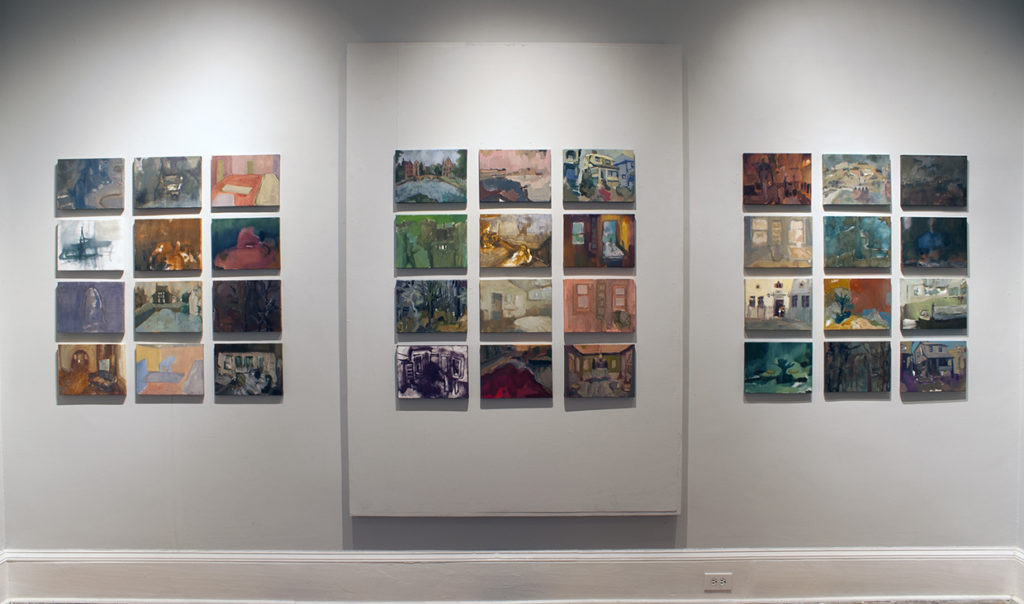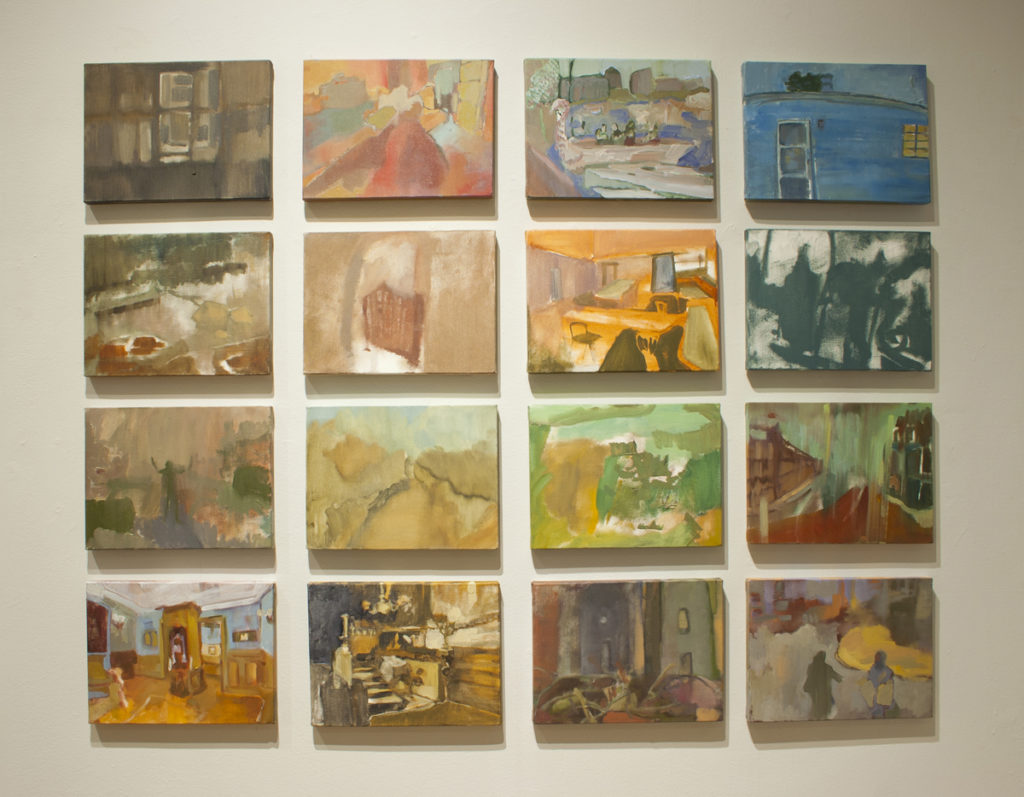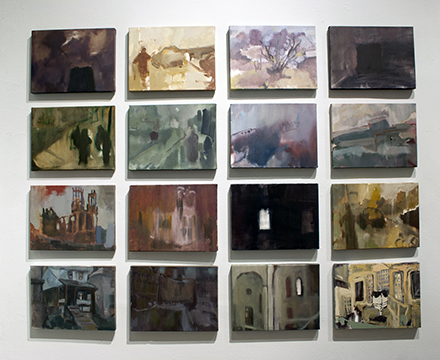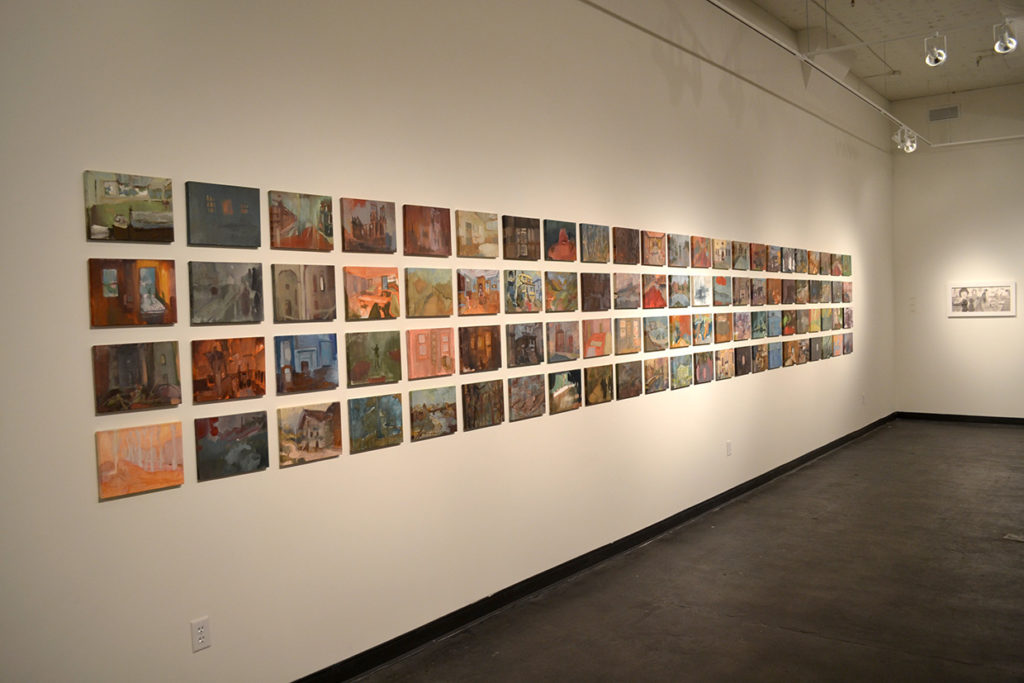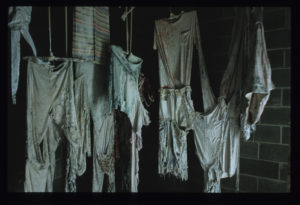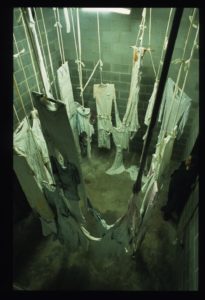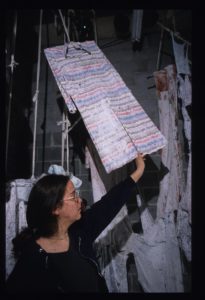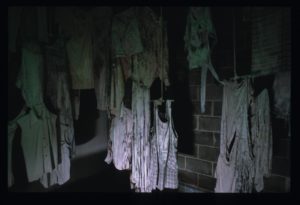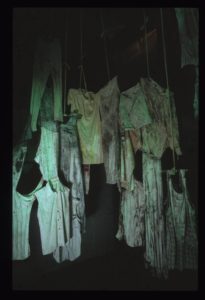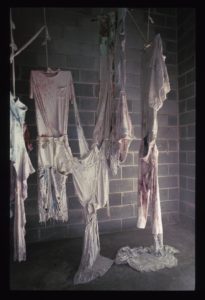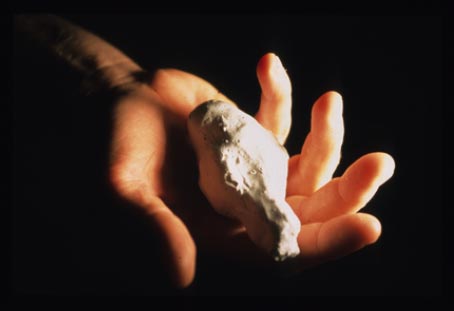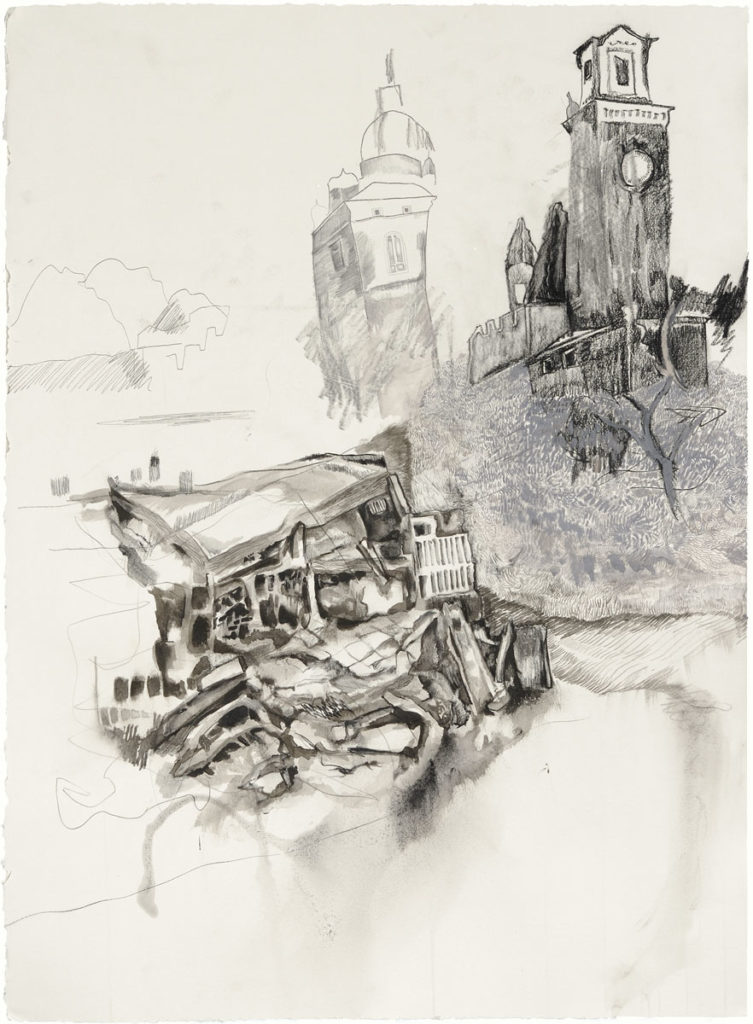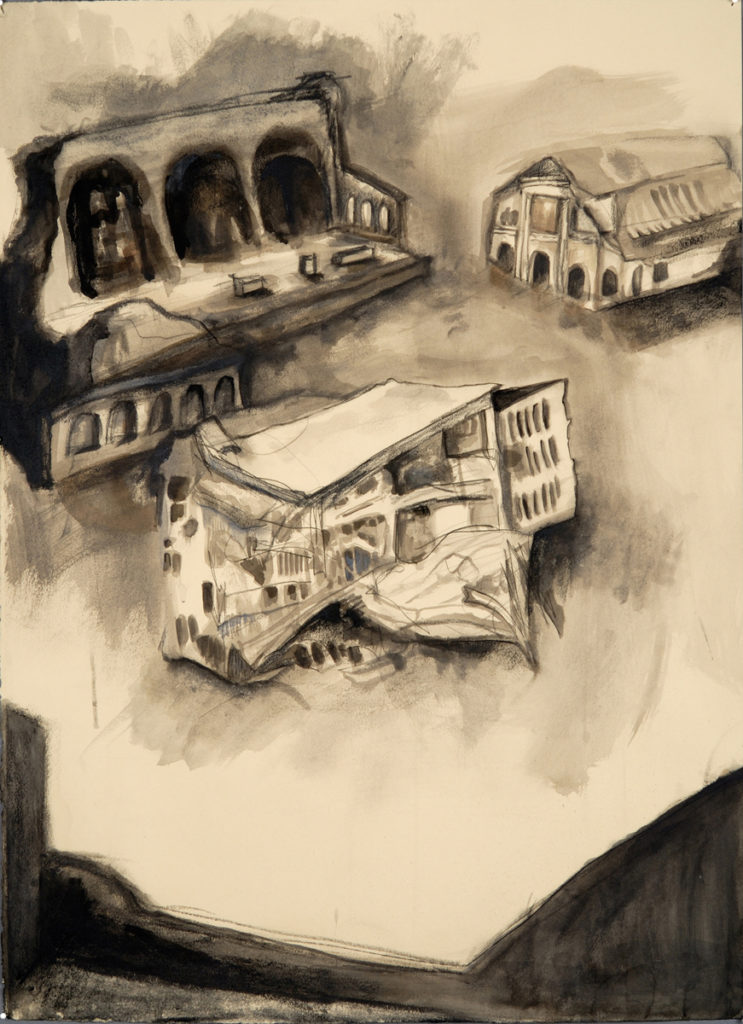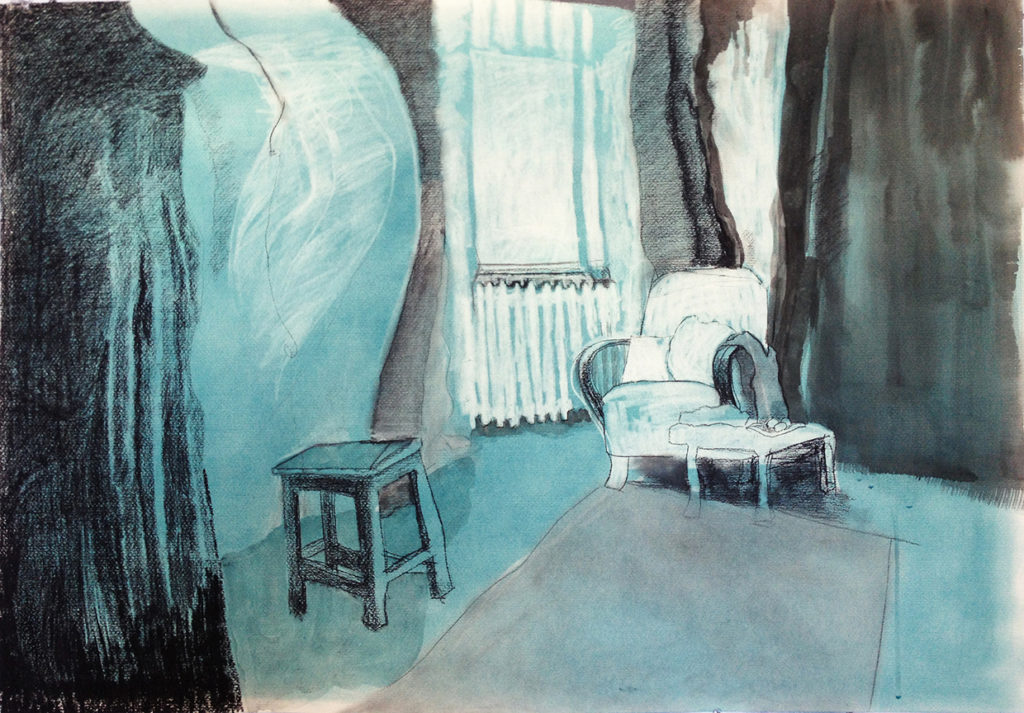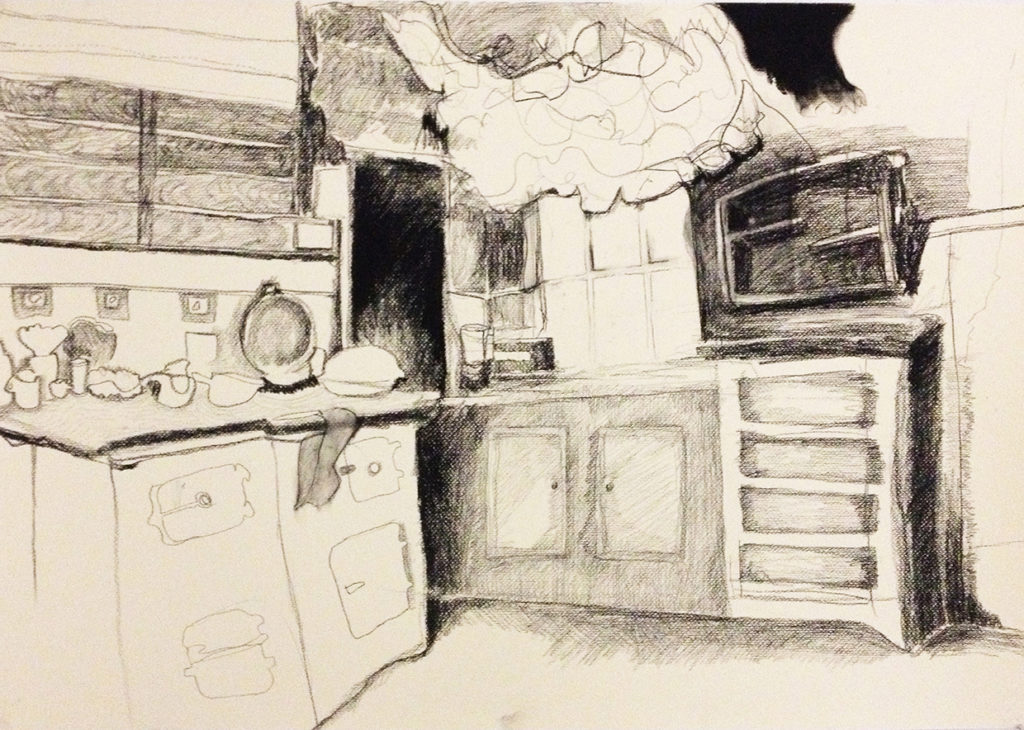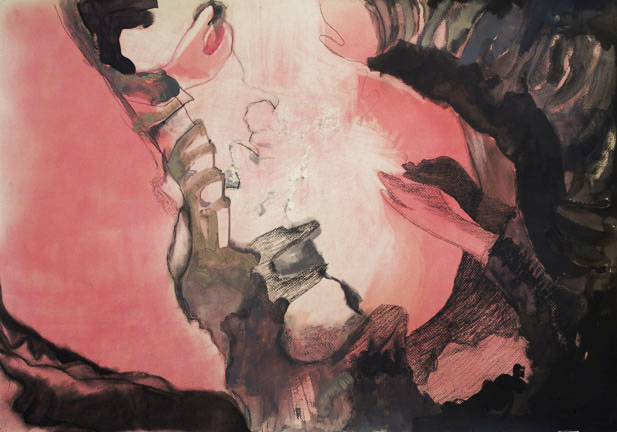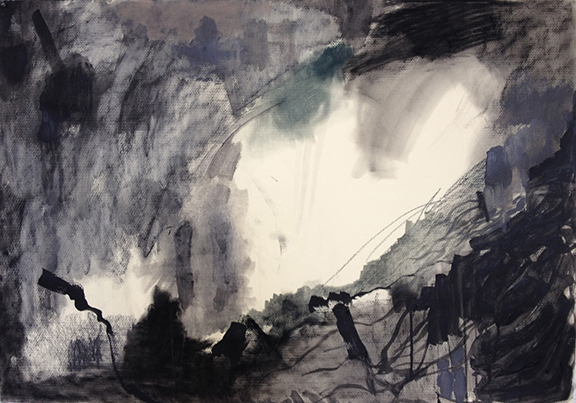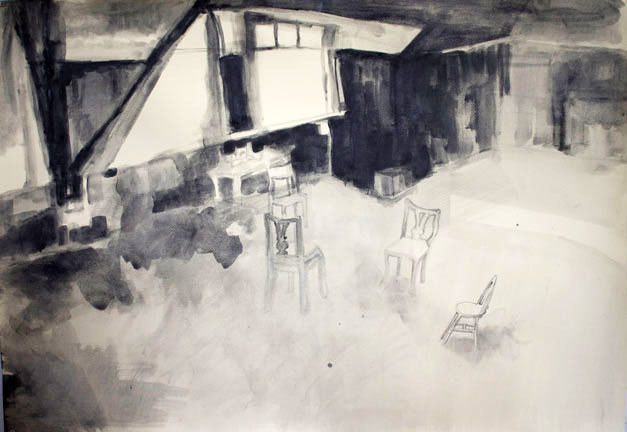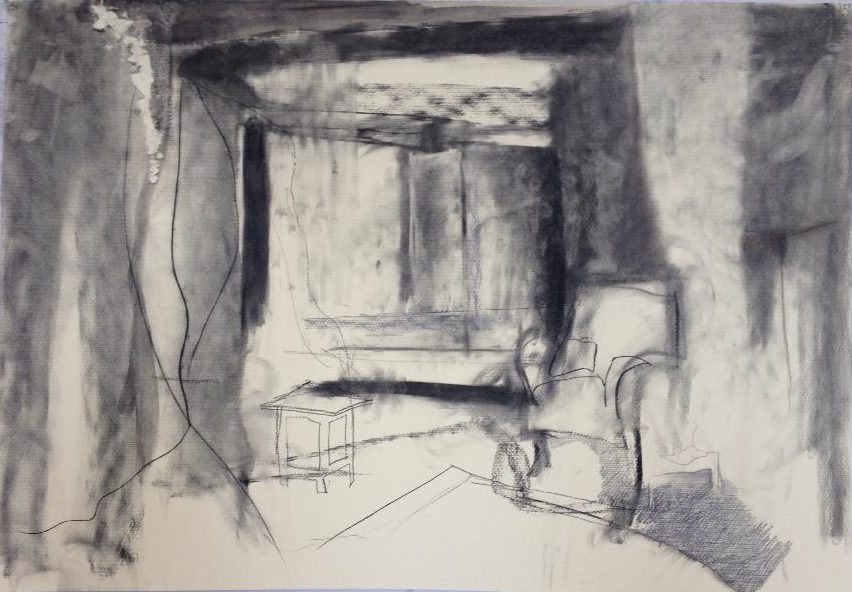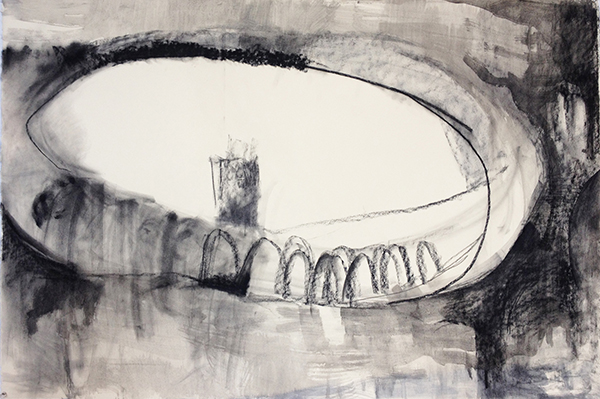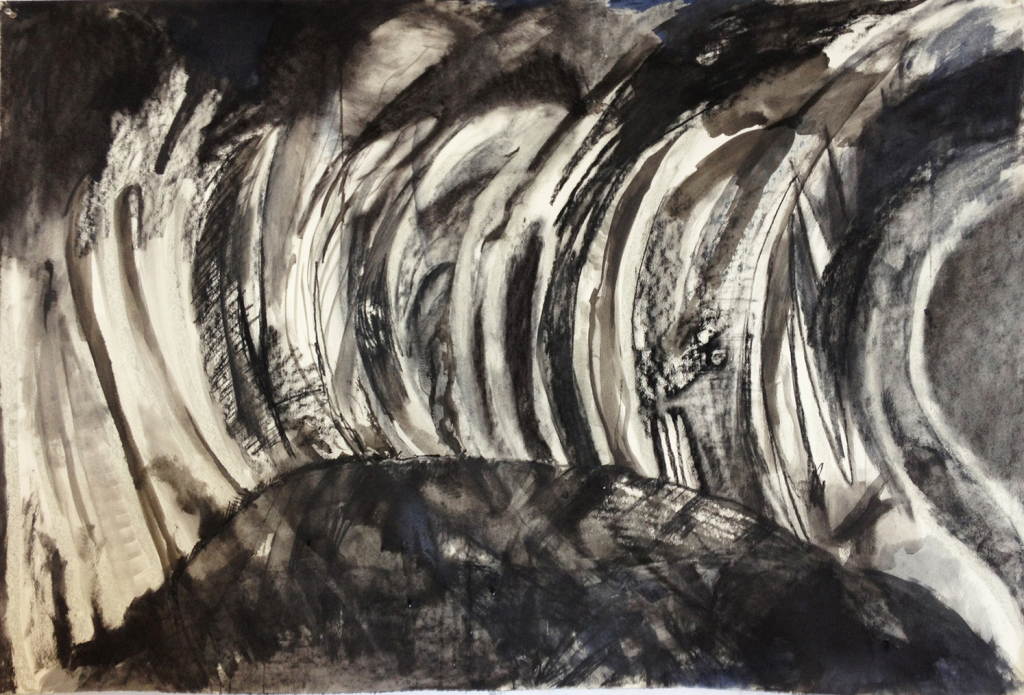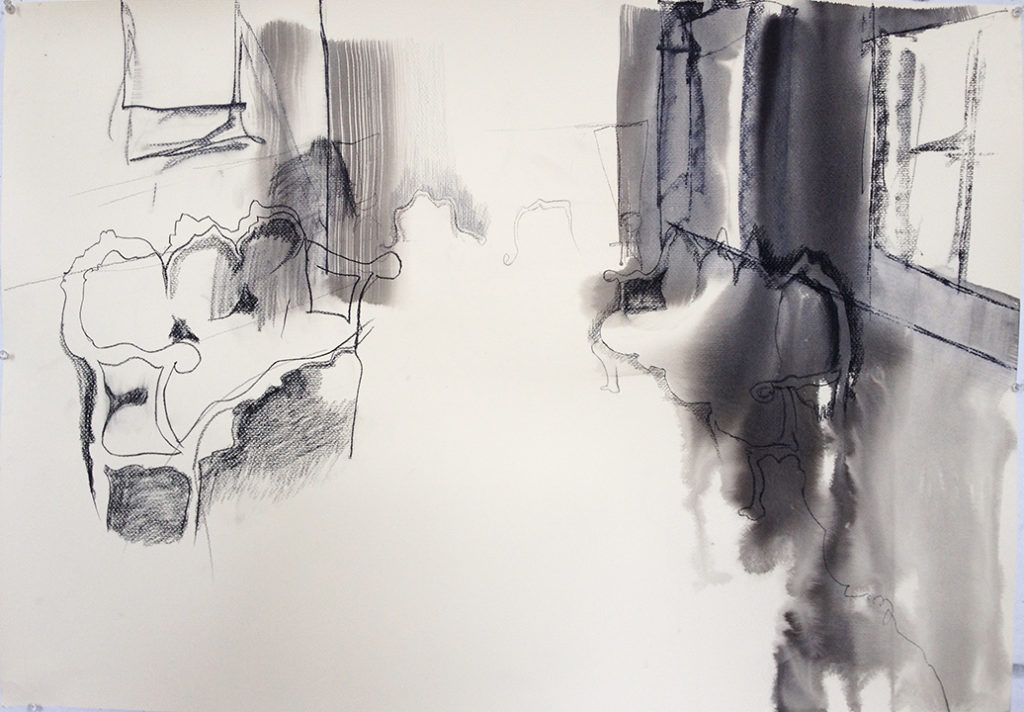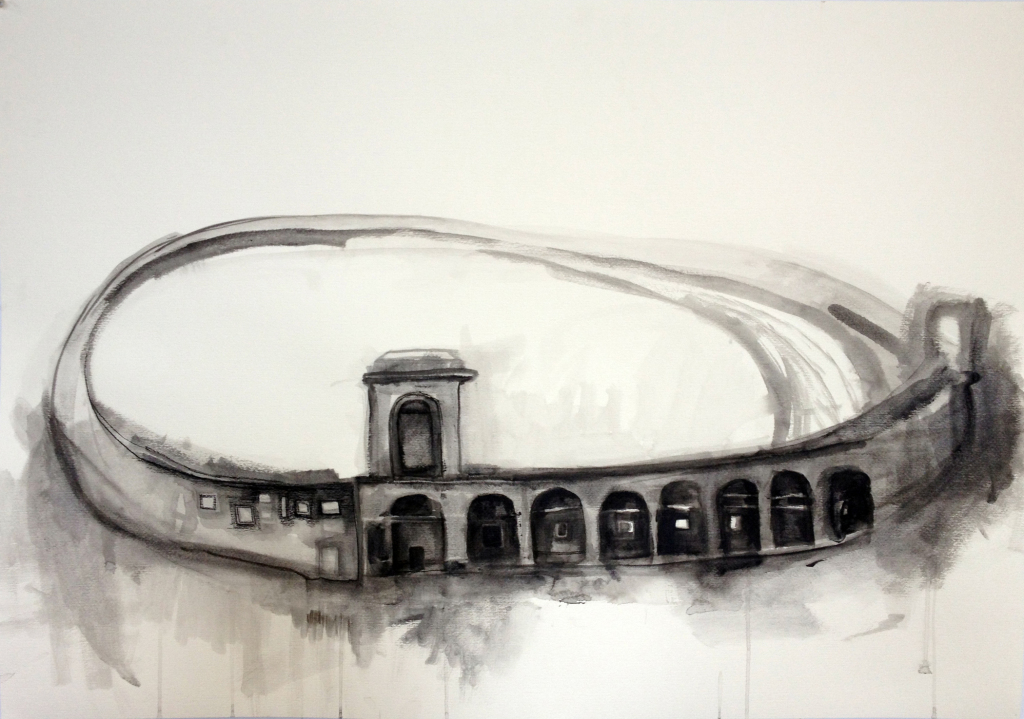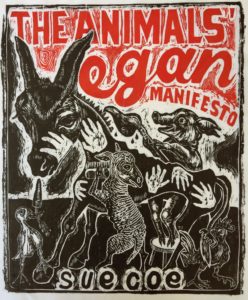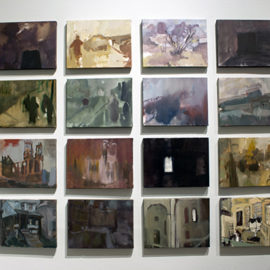
Early Solace paintings
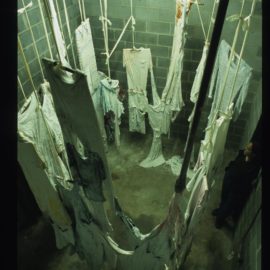
Threadborne
- Threadborne (detail), 2002. Clothes, plaster, paint, installation. The Project Room, Saltworks, Atlanta. Curator Joey Orr.
- “Threadborne” installation
- Threadborne detail
- Threadborne detail
- Threadborne detail
- Threadborne detail
Threadborne, August, 2002
The Project Room , Saltworks Gallery
Artist’s Statement
Inanimate objects take on power through
significant association. Relics, artifacts,
mementos, all are linked to some
experience of days gone by. The poignant
nuances of the everyday don’t necessarily
have a thing associated with them but, as
we breathe through these simple
experiences, we are most always clothed.
The sometimes mundane history of daily life
can be tracked by what we wear, what lays
closest to our skin.
Wardrobes can mold to our forms and
psyches, becoming an integral support to
how we identify ourselves. I am wedded to
the eighties, wearing clothes from high
school that are over half of my age, thankful
that they are back in style (or so I think). I am
bonded to this era – my first kiss, screw, drink,
and deep depression. In my closet is a box
of eighties’ era pants awaiting a dramatic
loss in my waist inches that will doubtful
ever happen. With image often being such
a priority, some of us collect
never-to-be-worn-again clothing that
presents who we want to be, how we want
to look. These folded or hung fabrics sit
there, gawking at us, asking to be taken out
of their misery.
Clothing can bear the weight of
overwhelming feelings and memories. Half
of my wardrobe was once my father’s. I
couldn’t bear to see these archives
disappear after he passed away. For those
who place significance on clothes throwing
them away can be a painful process. I am
guilty of emphasizing symbol over material. I
revel in memory and history. How healthy is
this? I don’t know.
Now, in my work, I am excavating the worn
and hoarded, cataloguing them, and letting
them go. thread borne releases these
documents of times past, with no possible
return for my heaven bound hamper.
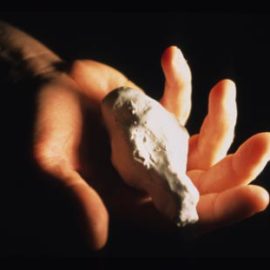
“un-marker (for Bialystok)”
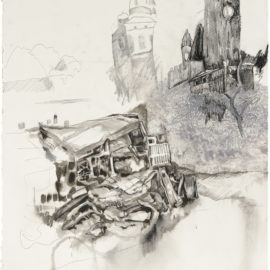
solace drawings
Protected: Meat_______
Protected: WOM
- Works on Paper
- “Remains: Light from the Ruins II,” 2013. Sumi and India inks, acrylic, pastel, charcoal on murillo paper, 27½” x 39.”
- “Meeting Room, with child,” 2013. Sumi and India inks, charcoal on murillo paper, 27½” x 39.”
- “Widow’s Room Excavated,” vine and compressed charcoal, charcoal pencil. Murillo paper, 27½” x 39.
- “To the Belly,” 2013. india ink and Sumi ink on Murillo paper, 27½” x 39.”
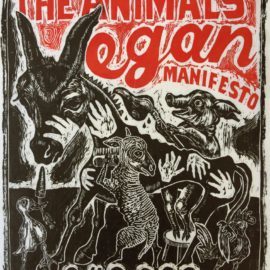
Sue Coe: The Animals Vegan Manifesto
Stop by the GSU Downtown Ernest G. Welch School of Art and Design Gallery to experience Sue Coe’s latest work:
Sue Coe: The Animals Vegan Manifesto
January 17 – March 17
Reception: Friday, March 17, 5:30 – 7:30pm
77 woodcuts from a new book, The Animals Vegan Manifesto, by artist and animal rights activist Sue Coe.
SGCI (Southern Graphics Council International) conference
This is where I will be next week. I cannot wait!
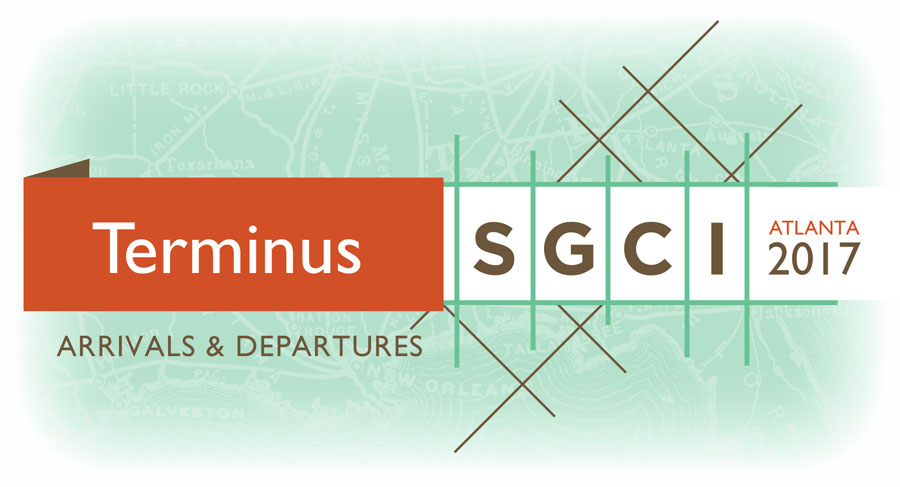
When: Wednesday, March 15 – Saturday, March 18, 2017
Where: Atlanta, GA
Early Bird rates: Register between now and midnight on January 15, 2017
Standard rates: Online registration ends at midnight on February 26, 2017
SGCI 2017: TERMINUS – Arrivals & Departures
Before Atlanta, there was “Terminus”. In 1837, a stake marking the founding of Terminus was driven into the ground, called the Zero Mile Post, which was the nexus of the Western and Atlantic Railroad. This became the point from which the city of Atlanta emerged. As a transportation hub, the rail lines became symbolic of paths taken or traveled and their intersections became connecting points of opportunity.
The 2017 SGCI Conference in Atlanta will showcase the rich printmaking community in our area and celebrate its long history. The conference will focus on the duality of the terminal point as a place for arrivals and departures, beginnings and endings. Our railroad history serves as a metaphor for the timeline of printmaking traditions; traversing enduring classicism and bringing us to our current location with broadly expanded practices. Terminus will nurture critical discourse on the historic and future relevance of printmaking, technical innovations, and the ability to engage with contemporary issues and social change.
For more information on the 2017 Conference in Atlanta, visit sgciatlanta.com
